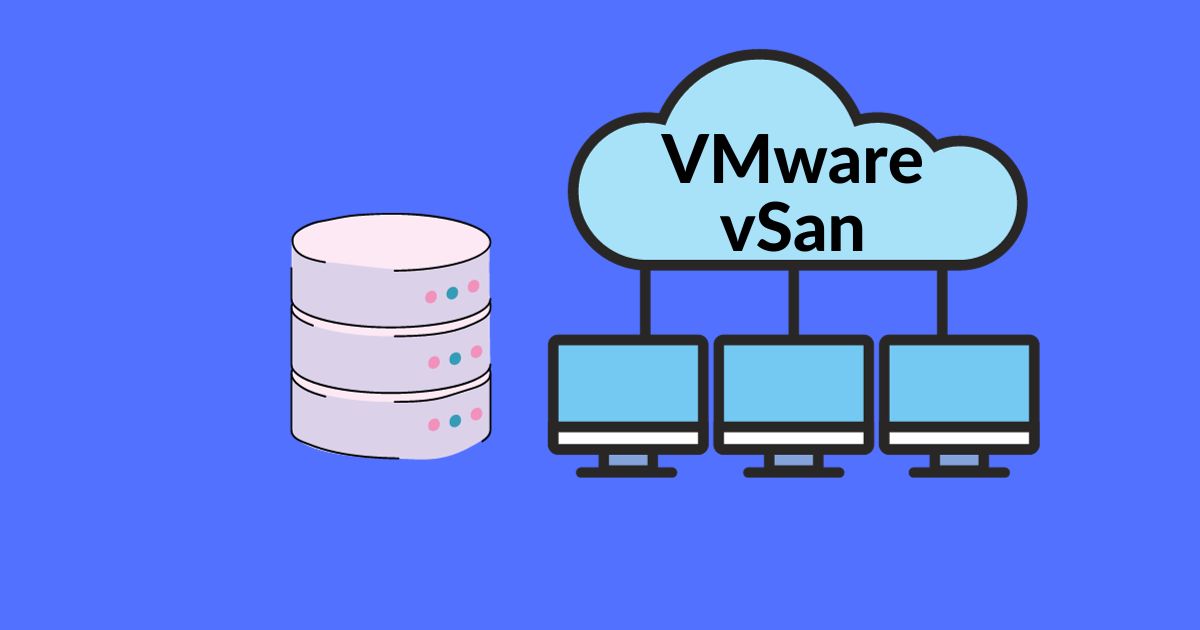In the fast-paced world of IT, where data is king and scalability is a must, traditional storage solutions often fall short. VMware vSAN, a game-changing technology in the realm of storage, has emerged as a beacon of hope for modern data centers. It’s not just about storage; it’s about redefining how we manage and scale our storage infrastructure. In this blog post, we’ll explore the transformative power of VMware vSAN and its impact on the future of data storage.
The Challenge of Traditional Storage
Traditional storage solutions have long been a staple in data centers, but they come with their own set of challenges. These include the need for costly and complex storage area networks (SANs), limited scalability, and difficulties in managing and provisioning storage resources. VMware vSAN addresses these challenges head-on.
Unlocking the Potential of VMware vSAN
VMware vSAN, short for Virtual SAN, is a software-defined storage solution that integrates seamlessly with VMware’s virtualization platform, vSphere. It leverages the direct-attached storage devices of ESXi hosts to create a shared and distributed storage pool. The result is a highly flexible, scalable, and cost-effective storage solution that adapts to the needs of modern data centers.
Key Advantages of VMware vSAN
- Simplicity and Efficiency: VMware vSAN simplifies storage management by converging compute and storage resources into a single, integrated platform. No need for separate, complex SANs. It streamlines management tasks and reduces operational complexity.
- Cost Savings: By utilizing standard x86 servers and locally attached storage devices, vSAN eliminates the need for expensive storage arrays. This translates to significant cost savings in terms of both capital expenditure and operational expenses.
- Scalability: As your data center grows, so can your storage infrastructure. VMware vSAN employs a scale-out architecture, allowing you to add hosts and storage capacity on the fly, ensuring seamless expansion.
- Performance: vSAN optimizes performance by using flash-based storage for caching and persistent storage. This results in faster read and write operations, enhancing the performance of your applications.
- Resilience and Availability: Data is distributed and mirrored across hosts, ensuring high availability. In case of hardware failures, virtual machines (VMs) can seamlessly restart on healthy hosts.
Use Cases for VMware vSAN
- Virtual Desktop Infrastructure (VDI): VMware vSAN provides the performance and scalability required for VDI deployments, enhancing the end-user experience.
- Database Workloads: With its high-performance capabilities, vSAN is an ideal choice for database workloads, offering low-latency storage for critical applications.
- Remote Office/Branch Office (ROBO) Deployments: vSAN simplifies storage management in remote locations, reducing the need for dedicated storage hardware.
- Disaster Recovery: When combined with VMware Site Recovery Manager (SRM), vSAN offers robust disaster recovery solutions, ensuring data resilience and business continuity.
The Future of Data Storage
As organizations continue to embrace virtualization and software-defined infrastructure, VMware vSAN’s role in modern data centers becomes increasingly significant. It adapts, scales, and simplifies storage management, making it an essential tool in the dynamic world of data storage.
In Conclusion
VMware vSAN isn’t just storage; it’s a transformation of how we approach storage solutions in modern data centers. Its efficiency, scalability, and cost-effectiveness are reshaping the landscape of data storage. As technology evolves, vSAN remains at the forefront, driving innovation and redefining the future of data storage.
In a world where data is growing exponentially, VMware vSAN empowers us to harness its full potential.

